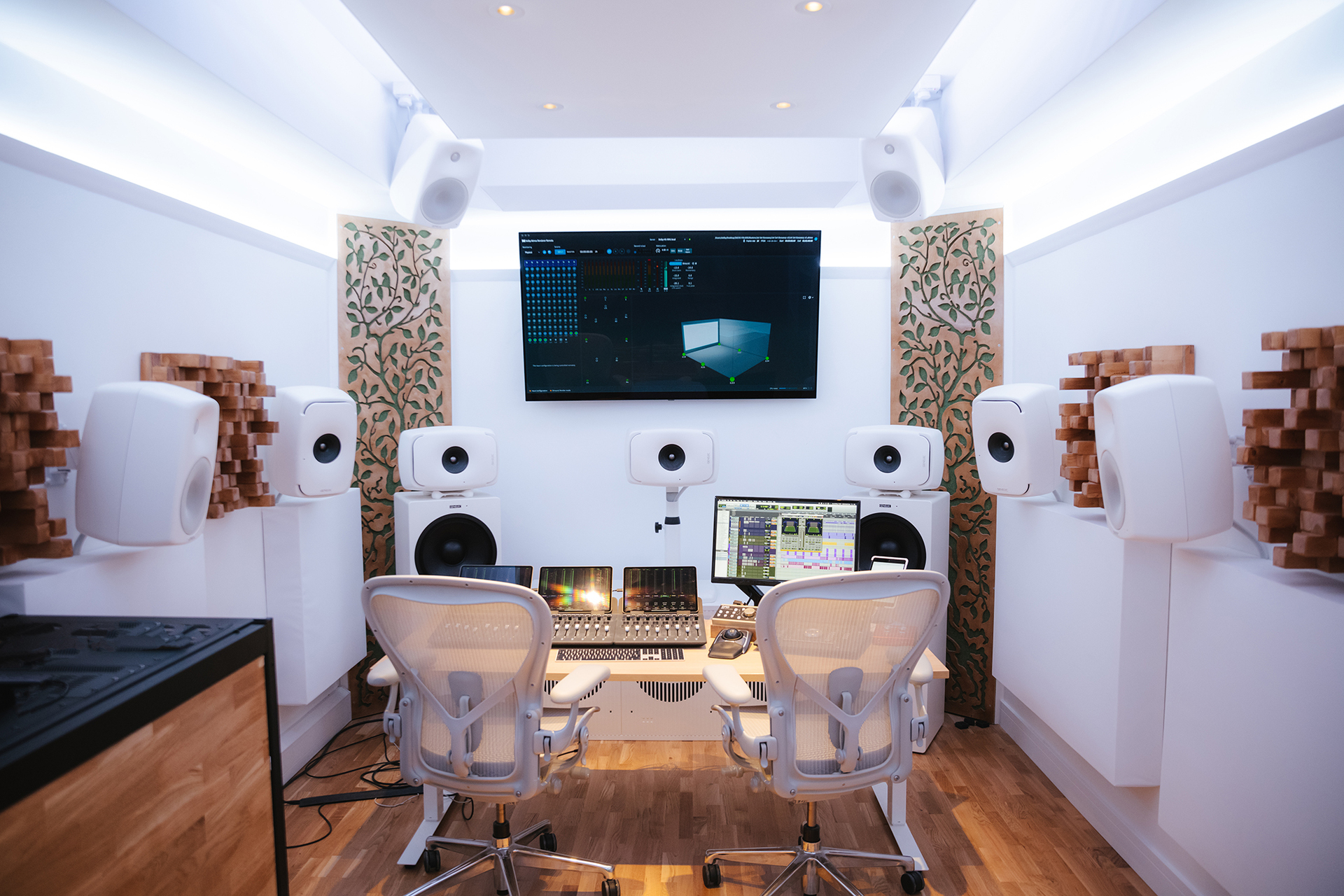
Other than being one of the most visually distinctive studios, there has been zero compromise in the acoustic design.
Unlike almost every other studio, we have not used bass management. Every single one of our state-of-the-art Genelec monitors exceeds Dolby’s Atmos for Music specification for volume and bass extension without having to divert the low end to the sub. Almost every other studio built is diverting the bass from some, or all, of their speakers to their sub. Even our height speakers extend to 33Hz!
Why is this important? It means every sound can localise properly in our studio, without part of your signal appearing from a different speaker in another part of the room, which causes timing, phase, amplitude and perception errors.
So why can’t other studios just disengage bass management?
The answer is Dolby’s ideal specification for Atmos.
They state that every single speaker has to operate full range down to 40Hz and so at 85dBc at the mix position, and this is the key part, with 30dB of Headroom! This means that every speaker must be able to reach 115dBc at mix position, without limiting.
This gets even more brutal for the LFE which must operate 10dB louder. The LFE must be able to reach 125dBc at mix position without limiting.
This left us a very narrow window of manufacturer’s products we could use, and we did not want to sacrifice the even frequency response and ultra-low distortion of the best studio monitors and move to PA speakers as the larger rooms have been forced to do. So, we designed a space that would work with the loudest of the premiere tier studio monitors. We designed the room dimensions around the speakers, rather than the other way round.
Genelec very soon became the only choice for us since they were unique in having a product portfolio that could actually hit Dolby’s SPL target whilst maintain their frequency response.
Why else are we different?
We have a full specification Dolby Atmos Mastering unit (RMU) Many facilities are using the internal renderer or even a reduced format RMU of only 64 channels. This means we can comfortably work on the most complex projects. As each modern project tends to become more complicated, imagine limiting yourself to only 64 tracks?
The Dolby Specifications
Unlike almost every studio out there, we have met and exceeded Dolby’s original Atmos targets – and without using bass management. We aimed from the start to be one of the best rooms in the world to mix and master in Dolby Atmos.
In recent times, Dolby have dropped the requirement for people to meet these targets as almost nobody was managing to do so, and also, they wish to make Atmos a much wider accessible format, with existing studios able to retrofit and people to build home studios.
This all creates even more need for a Gold Standard studio to master the new Atmos mixes being generated.
Dolby’s specifications are as follows:
Room Design:
The room itself must conform to minimum and maximum dimensions, but also ratios between them.
Mix Position:
The mix position must fall within a narrow range of placement in those room dimensions.
Speaker Positions:
All speakers must conform within narrow angle tolerances from mix position.
Volume:
All speakers must be within a distance to achieve 115dBc at mix position, apart from the LFE which must hit 125dB. This is to achieve the newer Dolby Atmos for Music guidelines.
Frequency Response:
All speakers must reach down to 40Hz minimum unless using bass management. LFE must reach a minimum extension of 31.5Hz.
Background Noise:
The Studio must meet a background noise level of NC25 with all machinery and air conditioning switched on.
Reverberation:
This differs depending on the size of studio. But for our studio, we had to conform to:
| Frequency | Target RT60 | Minimum RT60 | Maximum RT60 |
| 125Hz | 0.3s | 0.14s | 0.46s |
| 250Hz | 0.24s | 0.14s | 0.36s |
| 500Hz | 0.21s | 0.14s | 0.3s |
| 1kHz | 0.21s | 0.12s | 0.29s |
| 2kHz | 0.21s | 0.1s | 0.29s |
| 4kHz | 0.21s | 0.08s | 0.28s |
| 8kHz | 0.19s | 0.07s | 0.26s |
The Dolby Specification Paper:
For the full specification document that we conform with, please click the link below to download:
